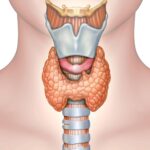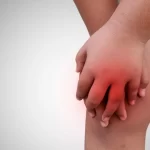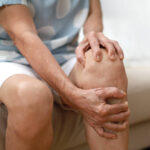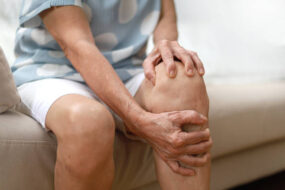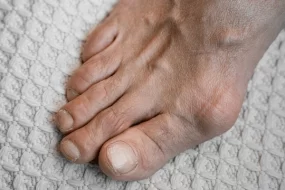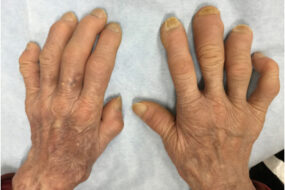- Home
- INTERNAL MEDICINE
- HIV/AIDS

Acquired immunodeficiency syndrome (AIDS) is caused by the human immunodeficiency virus (HIV), an enveloped RNA retrovirus.
According to KENPHIA 2018 survey, the prevalence of HIV among adults in Kenya stands at 4.9%. This translates to approximately 1.3 million adults living with HIV.
HIV infects cells bearing the CD4 receptor; T-helper lymphocytes, dendritic cells, monocyte–macrophages, and microglia. This leads to impairment of cellular immunity.
Transmission
HIV is transmitted by;
- Sexual contact.
- Exposure to blood through sharing needles, accidental needle pricks, contact with mucosa, or blood transfusions.
- Vertical transmission to infants’ in-utero, during delivery, or via breastfeeding.
Risk Factors of HIV/AIDS
- Male homosexuals
- IV drug users
- Multiple sexual partners
- People who receive frequent blood transmissions, e.g., hemophiliacs and sicklers.
- Infants born to HIV-infected mothers
- Uncircumcised males
- Presence of other sexually transmitted infections
- Anal sex
- High viral load
- Having unprotected sex
Life cycle of the HIV virus
1. Attachment with binding of gp120 to the CD4 receptor. This is followed by binding to a co-receptor; CXCR4 or CCR5.
2. Fusion and entry using gp41.
3. Reverse transcription by the reverse transcriptase enzyme, which converts viral RNA to DNA.
4. Integration of the viral DNA to the host cell genome by the integrase enzyme.
5. Viral RNA and Protein expression using the host’s RNA polymerase.
6. Assembly – The viral protease cleaves polyproteins to form new viral structural proteins and enzymes.
7. Maturation and Budding from the cell surface, using the host cell membrane as the viral envelope.
Clinical Presentation
Primary infection – usually presents within 2 weeks of infection with maculopapular rash, mucosal ulceration, fever, pharyngitis, lymphadenopathy, headache, myalgia, arthralgia, and diarrhea. This is often missed or misdiagnosed. Symptoms resolve shortly after.
The median time from infection to the development of AIDS in adults is 9 years. Patients usually present with opportunistic diseases. The manifestation can involve any body system.
| System | Symptoms |
| General | Lymphadenopathy, weight loss, and fever. |
| Gastrointestinal | Chronic diarrhea due to infection with Campylobacter, Shigella, Salmonella, and Isosporra. |
| Dermatological | Candidiasis, pruritic papular eruption, scabies, molluscum contagiosum, Kaposi’s sarcoma, warts, herpes simplex, herpes zoster, onychomycosis, and aphthous ulcers. |
| Liver | Symptoms of liver disease if co-infected with hepatitis viruses. |
| Respiratory | Pulmonary TB, pneumococcal pneumonia, and bacterial pneumonia |
| Hematological | Pancytopenia. |
| Neurological | Meningitis (cryptococcal, tuberculous, and bacterial), toxoplasma, depression, CMV encephalitis and retinitis, neurosyphilis, HIV-associated dementia, Progressive multifocal leucoencephalopathy (PML), lymphoma, and peripheral neuropathy. |
| Cardiac | TB pericarditis and HIV-associated cardiomyopathy. |
| Renal | HIV-associated nephropathy (HIVAN). |


Investigations
Baseline Tests for HIV/AIDS
- Rapid ELISA tests – antibodies to both HIV-1 and HIV-2. It is reported as positive if 2 assays show a positive result. Pre- and post-test counseling are done.
- CD4 cell count
- Viral load – baseline for infants.
- Serum cryptococcal antigen if CD4 ≤ 200 cells/mm3.
- Hemoglobin –may need to use zidovudine (AZT) which may cause anemia
- Pregnancy test
- Urinalysis- may be on tenofovir which requires renal dosing.
- Random blood sugar- some ARV may cause hyperglycemia, e.g., dolutegravir
- VDRL
- Cervical cancer screening-rapid progression in HIV patients.
- Hepatitis c antibody and HBsAg- identify co-infection. Do liver function tests if any of the two is positive.
Follow Up Tests for HIV/AIDS
- Viral load-done 3 months after starting antiretroviral therapy (ART) or after any regimen change. For those aged 0-24 years, it is done every 6 months. For those ≥ 25 years, do it annually if they are virally suppressed. If pregnant, do it at the confirmation of pregnancy, then every 6 months until complete cessation of breastfeeding.
- CD4 count- after diagnosis of any opportunistic infection
- Hemoglobin –symptoms of anemia
- Pregnancy test-every visit
- Glucose and lipid profile-annually
- Urinalysis and creatinine- annually if on tenofovir
- VIA/VILLI- annually.
The differential diagnosis for primary HIV infection
- Infectious mononucleosis
- Primary CMV infection
- Secondary syphilis
- Primary toxoplasmosis
- Rubella
MANAGEMENT
All patients should begin ART as soon as possible, preferably within two weeks of diagnosis, and even on the same day as testing if they are ready. Exceptions include;
- Patients with cryptococcal meningitis – start ART after completing 5 weeks of cryptococcal meningitis treatment.
- Patients with newly diagnosed TB – Start anti-TBs immediately. Initiate ART as soon as the medications are tolerated, preferably within 2 weeks. For TB meningitis, delay ART for 4-8 weeks.
First-line ART
- Birth – 4 weeks – AZT + 3TC + NVP
- 4 weeks – <15 years
- < 30 kg – ABC + 3TC + DTG
- ≥ 30 kg – TDF + 3TC + DTG
- 15 years- TDF + 3TC + DTG
- 4 weeks – <15 years
Post-exposure prophylaxis (PEP) regimen is similar to the first-line regimen above. It is taken for 28 days.
Pre-exposure prophylaxis (PrEP)
- Daily TDF/FTC in one tablet as long as the risk of HIV acquisition is ongoing and 28 days after the risk has ended.
- Event-driven oral PrEP.TDF/FTC two pills taken within 2- 24 hours before anticipated sex. A third pill is then taken 24 hours after the first two and a fourth pill 48 hours after the first two.
If TB/HIV Co-infection;
- 4 weeks-15 years who are < 30 kg – if on a DTG-based regimen, give DTG twice daily when using rifampicin-containing TB treatment and until 2 weeks after TB treatment, then revert to once daily. If using LPV/r-based first line, change to DTG-based second-line, then increase DTG as described.
- For those> 30 kgs or > 15 years – Give TDF/3TC/DTG morning + DTG 50mg in the evening when using rifampicin-containing TB treatment and until 2 weeks after TB treatment then revert to TDF/3TC/DTG.
Prevention of Mother to Child Transmission
HIV Exposed Infant prophylaxis;
- AZT and NVP for 6 weeks then NVP and cotrimoxazole until 6 weeks after complete cessation of breastfeeding.
- If the child is not breastfeeding discontinue the prophylaxis after 12 weeks on NVP.
Exclusive breastfeeding for the first 6 months. Introduce complimentary feeding at month 6. Continue breastfeeding up to 2 years and beyond.
Testing of HIV-exposed infants (HEI) is done using
- DNA PCR within 6 weeks of age or first contact thereafter.
- If negative another DNA PCR at 6 months.
- If negative, repeat DNA PCR at 12 months.
- If breastfeeding, perform an HIV antibody test after every 6 months and 6 weeks after complete cessation of breastfeeding

Prevention
Preventing HIV
- Abstinence
- Protected sex-anal, vaginal, and oral.
- Treatment with ART and viral load suppression in those who are HIV positive, undetectable=untransmittable (U=U).
- Exclusive breastfeeding during the first 6 months
- Post-exposure prophylaxis to reduce the likelihood of HIV infection after potential exposure, e.g., in health care, post-rape, or after unprotected sex.
- Pre-exposure prophylaxis for people with ongoing risk of HIV acquisition
- Screen blood and blood products for HIV before transmission
- Risk reduction for drug- users by providing them with needles and methadone replacement therapy
- HIV-infected mothers should adhere to ART and undergo viral load testing during pregnancy and breastfeeding.
Preventing Opportunistic Infections related to HIV
- Diarrhea-Safe water and food, and wash hands after handling animals
- TB- TB preventive therapy
- Toxoplasmosis – avoid handling kittens and cat litter.
- Cotrimoxazole Preventive Therapy (CPT) reduces the risk of common bacterial infections, diarrhea, sepsis, and malaria. It is given to HIV-exposed infants, HIV-infected patients <15 years of age, pregnant and Breastfeeding women, and PLHIV > 15 years living in malaria-endemic zones. For those presenting with WHO stage 3 or 4 and suspected treatment failure, it is given until they are clinically stable. I.e., on ART for at least 12 months and showing no signs or symptoms of WHO stage 2, 3, or 4.
- Vaccination against hepatitis B.
- Annual cervical cancer screening
Complications of HIV/AIDS
- Development of cancers, e.g., Kaposi’s sarcoma, cervical cancer, and non-Hodgkin lymphoma.
- Rapid progression of cancers.
- Opportunistic infections
- Cardiovascular disease,
- Diabetes
- Side effects of ART



